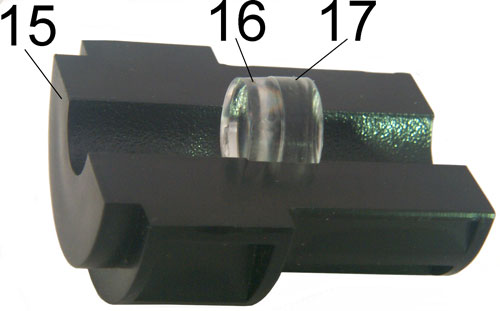Galileoscope
© Brooke Clarke 2009
Background
Using
Images
Moon
Vega
Jupiter
Assembly
Related
Links
Using
Images
Moon
Vega
Jupiter
Assembly
Related
Links
Background
On 3 April 2009 while watching
live the Around
the World in 80 Telescopes videos (all are now on line)
I ordered this scope.
This 2" F/10 Retractor kit was
developed
to be part of the International Year of Astronomy
(IYA2009). "Nothing piques a child's interest in
astronomy as
effectively as looking through a telescope she/he built herself/himself." For $15 it's a great buy! They are available from Galileoscope.org.
Brayebrook Observatory: Constructing a Galilean refractor based on "Old Discoverer"
effectively as looking through a telescope she/he built herself/himself." For $15 it's a great buy! They are available from Galileoscope.org.
Brayebrook Observatory: Constructing a Galilean refractor based on "Old Discoverer"
Using
The eyepieces are standard 1
1/4" so
you can use your existing eyepieces. I've read that
there's not
enough focus range to allow a star diagonal to focus.
It may be that a European tripod would work if a 3/8"-16 was substituted for the 1/4"-20 nut for American tripods.
28 July 2009 - The two problems are:
It may be that a European tripod would work if a 3/8"-16 was substituted for the 1/4"-20 nut for American tripods.
28 July 2009 - The two problems are:
- Focusing by moving the draw tube when viewing through the eyepiece is OK, but it's much more difficult when a camera is being used.
- The Earth's spin causes any heavenly body to drift out
of the field of view very quickly
Images
28 July 2009 - Images taken by
tying
Galileoscope to another astronomical telescope (at Paul's
house) that is on a polar
aligned mount. When running this despins the earth.
Camera was the DSI. Note the images are only using the scope body and objective lens. They have nothing to do with the eyepieces.
The images you see through the eyepiece are better than these photos. It must have been quite a chore for Galileo to track whatever he was looking at either by moving the scope or by holding the scope still and tracking with his eye.
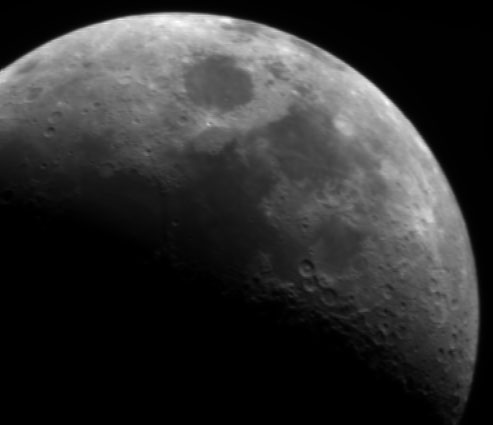
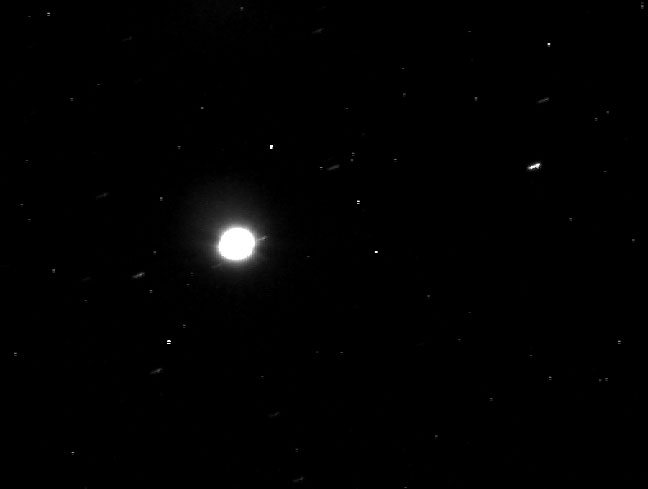
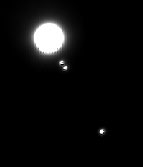
Camera was the DSI. Note the images are only using the scope body and objective lens. They have nothing to do with the eyepieces.
The images you see through the eyepiece are better than these photos. It must have been quite a chore for Galileo to track whatever he was looking at either by moving the scope or by holding the scope still and tracking with his eye.
Moon

Vega

Jupiter

Assembly
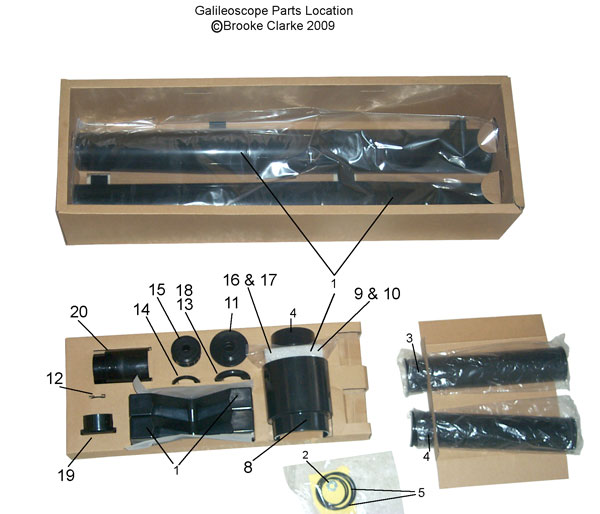 |
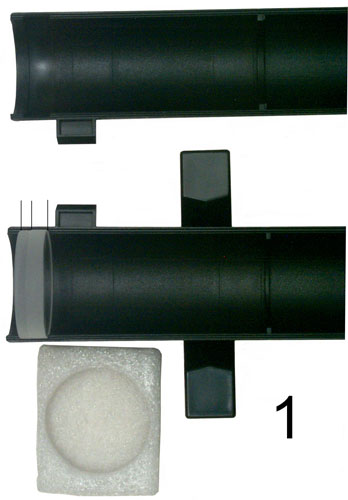 |
 |
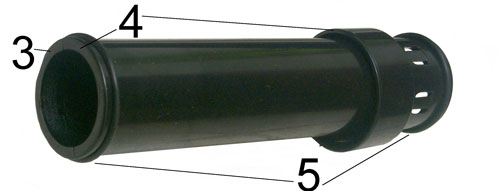 |
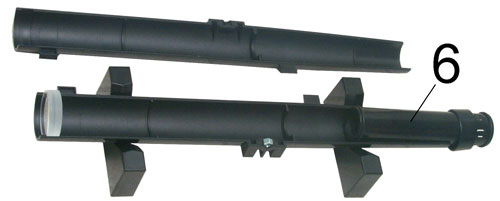 |
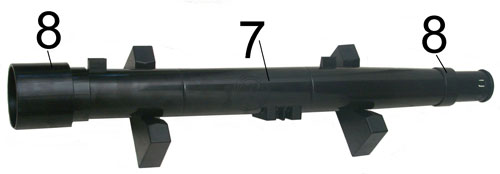 |
25X Eyepiece |
25 X Eyepiece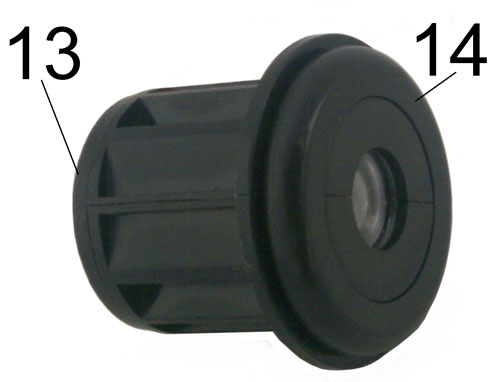 |
For either Galilean Eyepiece (19) or 2X Barlow (20)
|
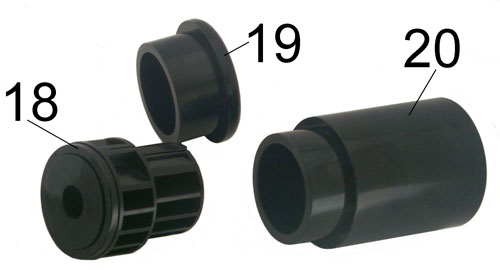 |
Galilean Eyepiece |
2X Barlow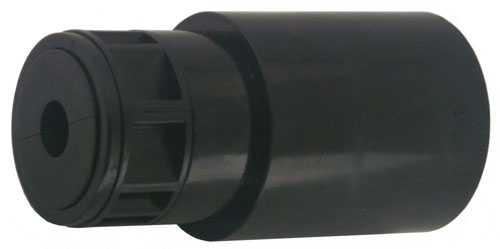 |
